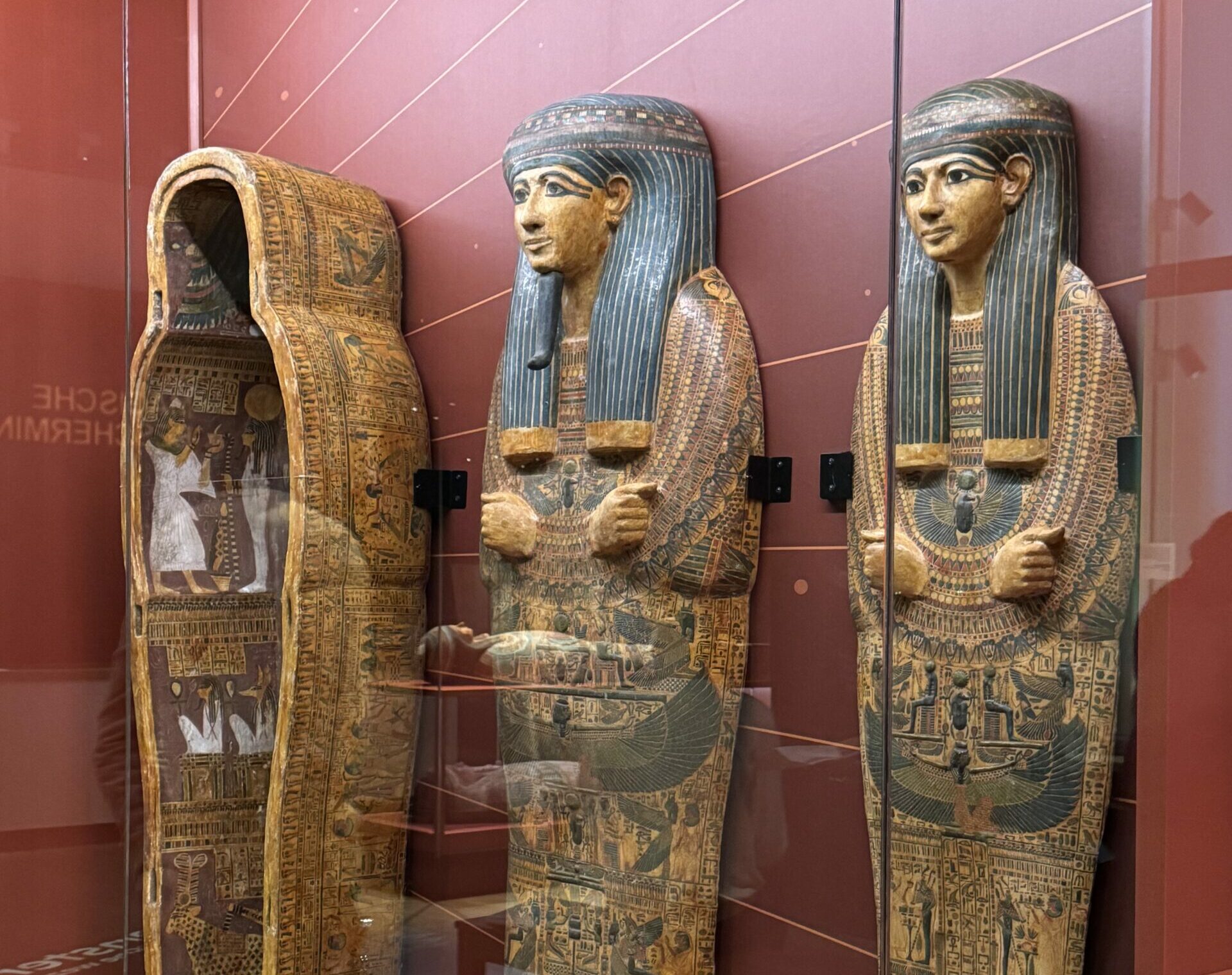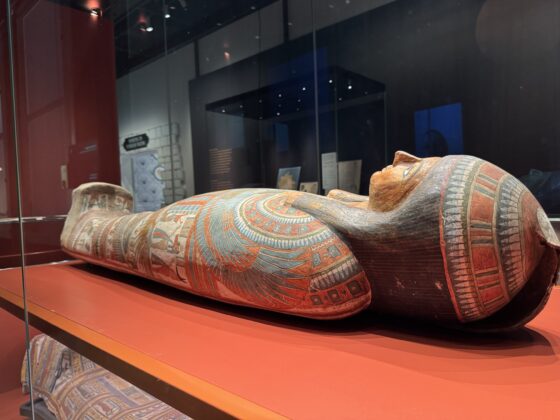The magic of Egypt: mummies take centre stage in Leiden
Senay Boztas
After five years travelling the other side of the world, a blockbuster exhibition on ancient Egypt complete with more than 10 mummy cases is on show in Leiden.
Discovering Ancient Egypt, open this week at the Rijksmuseum van Oudheden (RMO), explores the centuries-old fascination with these ancient peoples through the eyes of ten different researchers from different times and countries.
The exhibition is mostly composed of objects from the museum’s own depot, plus several manuscripts displayed publicly for the first time and loans from French collections such as the Louvre – sometimes uniting treasures found in the same grave, taken and then scattered.
Thanks to the extraordinary desert climate of Egypt, preserving materials such as wood that rotted away in other climates, generation after generation has been drawn to the colourful religion, art and beliefs of this ancient civilisation, said curator Toon Sykora at a press opening.
“So much has simply been preserved in the ancient Egyptian desert climate, where they carefully wrapped and put so many things from daily life in a safe grave,” he said. “There would be nothing left of a painted coffin in the Netherlands 100 years later…But because we have so much material, we can tell the story of ancient Egyptians 5,000 years ago in incredible detail, and this is unique.”
Princes
The exhibition shows that the period does not just appeal to modern academics, popular culture and people – even ancient Egyptians were fascinated by the huge pyramids and monuments left to people who had gone before them. Arabic and Middle Eastern scholars followed, and Greek and Roman society.
Then came European archaeologists, scientists and adventurers who would plunder the graves, unwrap the bodies and distribute their treasures to end up in collections such as this one in Leiden.
“Egypt played a role in the Bible, the Greek and Romans wrote with admiration over Egypt and that idea has never gone away,” said Sykora. “And it’s still part of our stories, in countless films and games. Even in Leiden when you see a kebab shop, you often see a pyramid over the door. Egypt is everywhere.”
The exhibition tells the stories of ancient Egyptian princes discovering their own ancestry in grave monuments around them, followed by the Arabic scholars who flocked to Cairo between 969 and 1517AD, describing the ancient pyramids they saw and trying to decipher the hyroglyphic writing.
By the late Middle Ages, Europeans got in on the act, treasure diggers began to feed the “acquisition hunger of European museums” and Egyptology came into existence as an academic discipline.
Fake
Some of the objects collected by the explorers of the time were actually fake. When the 19th century photography pioneer Alexine Tinne travelled from The Hague to Egypt, he picked up “authentic” clothing that was actually made for the tourism market.
Other objects were plundered and sold on: golden treasures from the grave of general Djehoety in Sakkara found in 1824 – borrowed from the Louvre museum in Paris – are reunited with jewellery in the RMO’s collection in the show.
While the mummy cases are on display, Sykora said that there are now international protocols regarding the treatment of preserved bodies – as well as investigation that could damage ancient remains. “This is a debate that is happening on a global scale,” he said. New archaeological research, meanwhile, is piecing together more information about how ordinary people lived at the time too.

Mummy
The final rooms of the exhibition show mummified animals including cats and crocodiles and a large collection of painted mummy cases. In a video, different researchers muse on why Egypt is so compelling as a subject – from the childlike forms of the shapes and artistry of the objects, to the intense humanity of how these ancient peoples treated spirituality, life and death.
The richest Egyptians like temple priest Panehsy did not have one decorated case for their mummified body but several, like a Russian doll, to protect them on their way to the next life.
“You see faces, images, hieroglyphs – and everything is so compelling,” said Sykora. “Ancient Egypt is a timeless source of our earliest history, a chance to look in extraordinary detail at ourselves as people. That is the magic of Egypt.”
Discovering Ancient Egypt runs until March 15, 2026 at the Rijksmuseum van Oudheden in Leiden
Thank you for donating to DutchNews.nl.
We could not provide the Dutch News service, and keep it free of charge, without the generous support of our readers. Your donations allow us to report on issues you tell us matter, and provide you with a summary of the most important Dutch news each day.
Make a donation